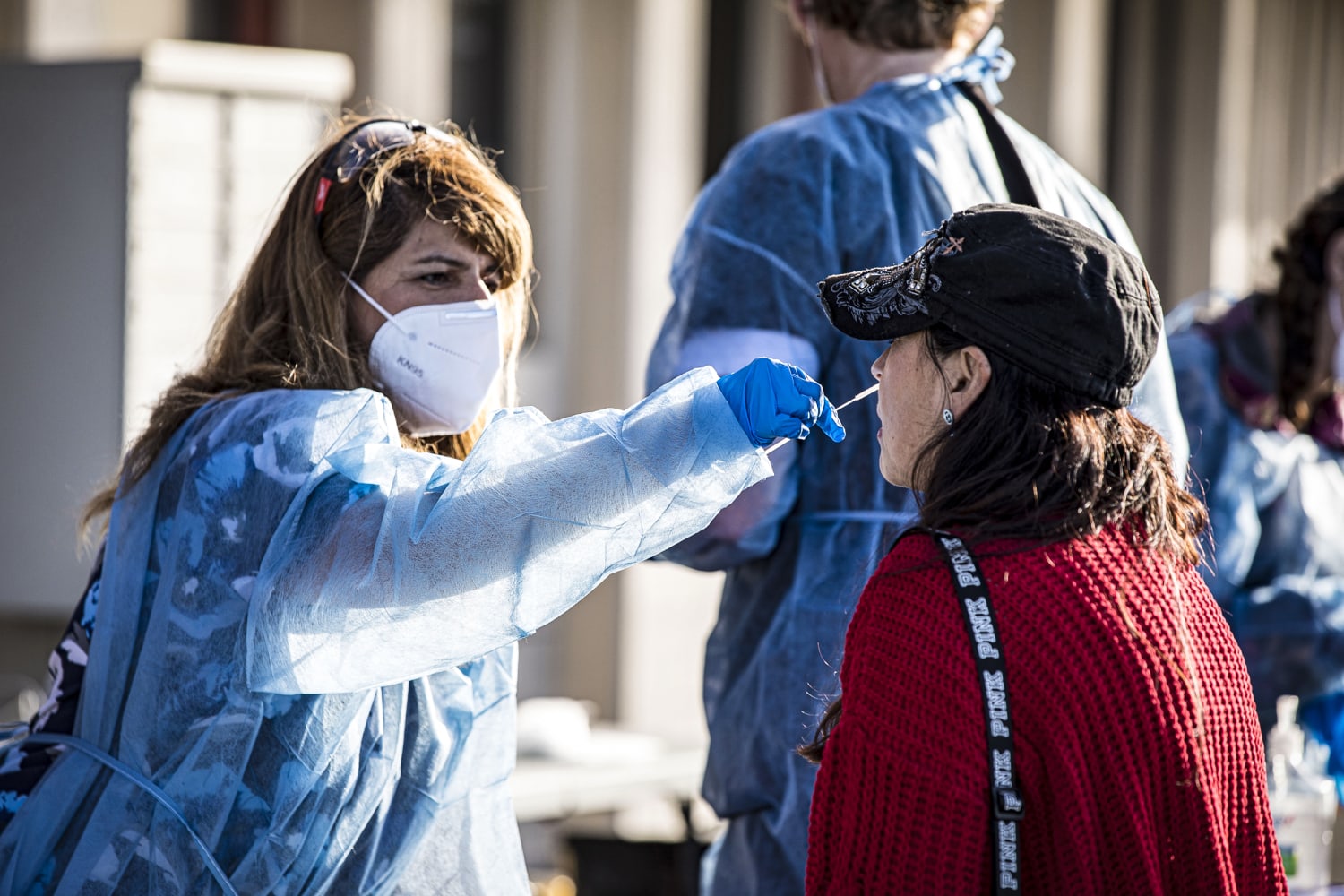[ad_1]

Doctors say they’re finding it increasingly difficult to distinguish Covid from allergies or the common cold, even as hospitalizations tick up.
The illness’ past hallmarks, such as a dry cough or the loss of sense of taste or smell, have become less common. Instead, doctors are observing milder disease, mostly concentrated in the upper respiratory tract.
“It isn’t the same typical symptoms that we were seeing before. It’s a lot of congestion, sometimes sneezing, usually a mild sore throat,” said Dr. Erick Eiting, vice chair of operations for emergency medicine at Mount Sinai Downtown in New York City.
The sore throat usually arrives first, he said, then congestion.
The Zoe COVID Symptom Study, which collects data on self-reported symptoms in the U.K. through smartphone apps, has documented the same trend. Its findings suggest that a sore throat became more common after the omicron variant grew dominant in late 2021. Loss of smell, by contrast, became less widespread, and the rate of hospital admissions declined compared to summer and fall 2021.
Doctors now describe a clearer, more consistent pattern of symptoms.
“Just about everyone who I’ve seen has had really mild symptoms,” Eiting said of his urgent care patients, adding, “The only way that we knew that it was Covid was because we happened to be testing them.”
How do Covid symptoms progress?
Though three doctors interviewed said Covid commonly begins with a sore throat these days, they gave differing descriptions of the severity.
Dr. Grace McComsey, vice dean for clinical and translational research at Case Western University, said some patients have described “a burning sensation like they never had, even with strep in the past.”
“Then, as soon as the congestion happens, it seems like the throat gets better,” she said.
Along with congestion, doctors said, some patients experience a headache, fatigue, muscle aches, fever, chills or post-nasal drip that may lead to a cough — though coughing isn’t a primary symptom.
McComsey said fatigue and muscle aches usually last a couple of days, whereas congestion can sometimes last a few weeks.
She estimated that only around 10-20% of her Covid patients lose their sense of taste or smell now, compared to around 60-70% early in the pandemic.
Eiting said he’s not seeing a lot of diarrhea lately, either — a more common symptom in the past.
For the most part, the doctors said, few patients require hospitalization — even those who show up at emergency rooms — and many recover without needing the antiviral pill Paxlovid or other treatment.
“Especially since July, when this recent mini-surge started, younger people that have upper respiratory symptoms — cough, runny nose, sore throat, fever and chills — 99% of the time they go home with supportive care,” said Dr. Michael Daignault, an emergency physician at Providence Saint Joseph Medical Center in Burbank, California.
Why Covid seems milder now
Dr. Dan Barouch, director of the Center for Virology and Vaccine Research at Beth Israel Deaconess Medical Center in Boston, attributed the mild symptoms that doctors are seeing to immunity from vaccines and previous infections.
“Overall, the severity of Covid is much lower than it was a year ago and two years ago. That’s not because the variants are less robust. It’s because the immune responses are higher,” Barouch said.
Other doctors think that omicron itself also changed the presentation of Covid symptoms, since some studies have shown that early versions of it weren’t as good as previous variants at infecting the lungs.
The most prevalent subvariant circulating now is EG.5, followed by a strain called FL.1.5.1. Together, those two appear to be driving an uptick in Covid infections, though scientists are also watching BA.2.86, a variant with a large number of mutations that looks significantly different from previous versions of omicron. Though cases of BA.2.86 are rising in the U.S., it isn’t among the top variants circulating.
Barouch said the new booster shots should be effective against those three strains and others.
Who is being hospitalized?
The U.S. is recording around 19,000 Covid hospitalizations per week, according to the Centers for Disease Control and Prevention. The weekly average rose around 80% from early August to the beginning of September.
Hospitalization rates are highest among people ages 75 and up, followed by babies under 6 months and adults ages 65 to 74. Most people hospitalized for Covid since January had not received a bivalent booster, according to the CDC.
Older people in particular may have waning immunity if they haven’t been infected or vaccinated recently, Daignault said.
“That’s why the priority should be to vaccinate that particular group of patients with the fall booster,” he said.
Daignault said emergency rooms generally aren’t seeing the shortness of breath, low oxygen rates or viral pneumonia that led some patients to be put on oxygen tubes or ventilators in the past.
Instead, he said, the typical Covid patients hospitalized in Burbank are older and suffering dehydration, loss of appetite, weakness or fatigue.
What does long Covid look like now?
A study published this month found that long Covid rates declined once omicron became the dominant variant. Researchers don’t know if milder disease contributed to that trend, or if population immunity was largely responsible.
But McComsey — a principal investigator for the National Institutes of Health’s RECOVER Initiative, which studies long Covid — said she’s still seeing new cases of long Covid. Rapid heart rate and exercise intolerance are among the most common lingering symptoms, she said.
Each re-infection brings a risk of long Covid, McComsey added, so she doesn’t think people should ignore the current rise in infections.
“What we’re seeing in long Covid clinics is not just the older strains that continue to be symptomatic and not getting better — we’re adding to that number with the new strain as well,” McComsey said. “That’s why I’m not taking this new wave any less seriously.”
[ad_2]
Source link
